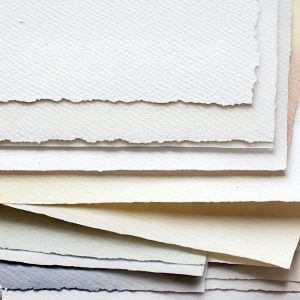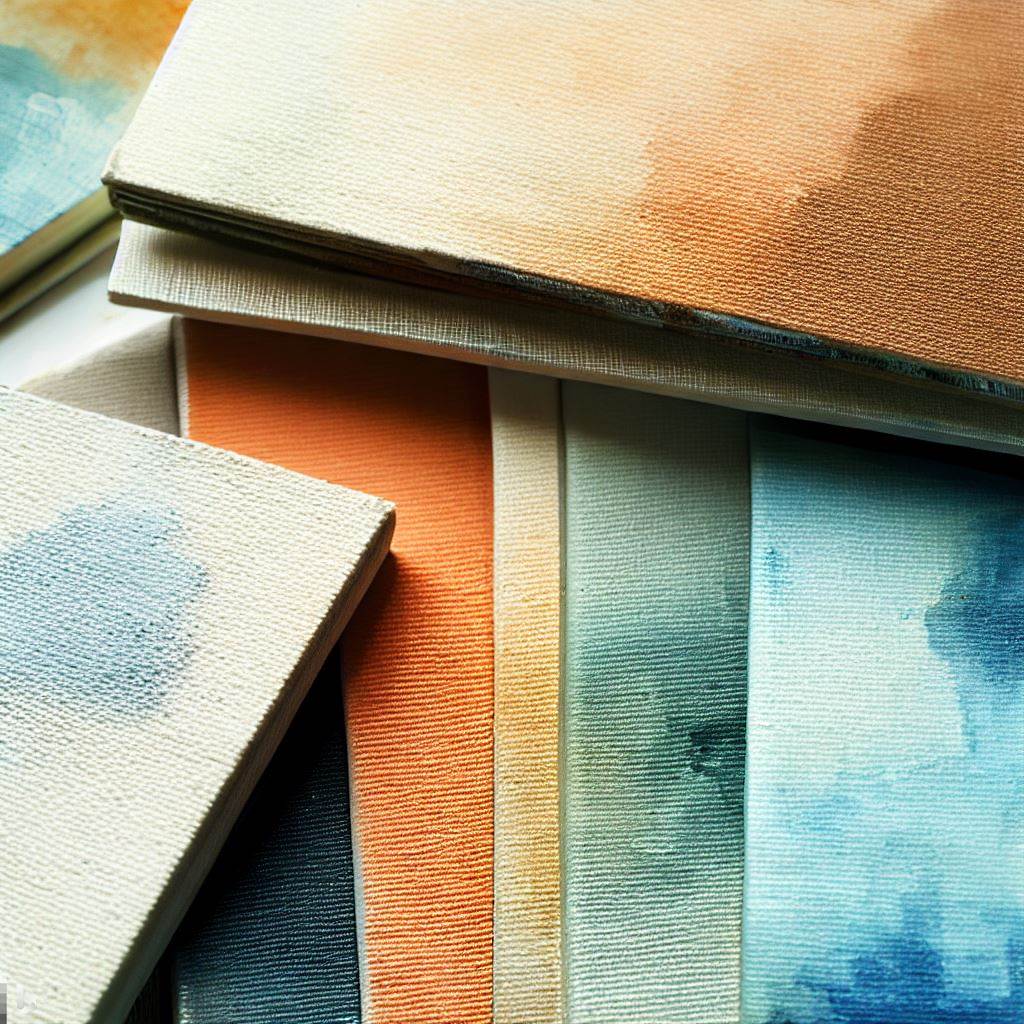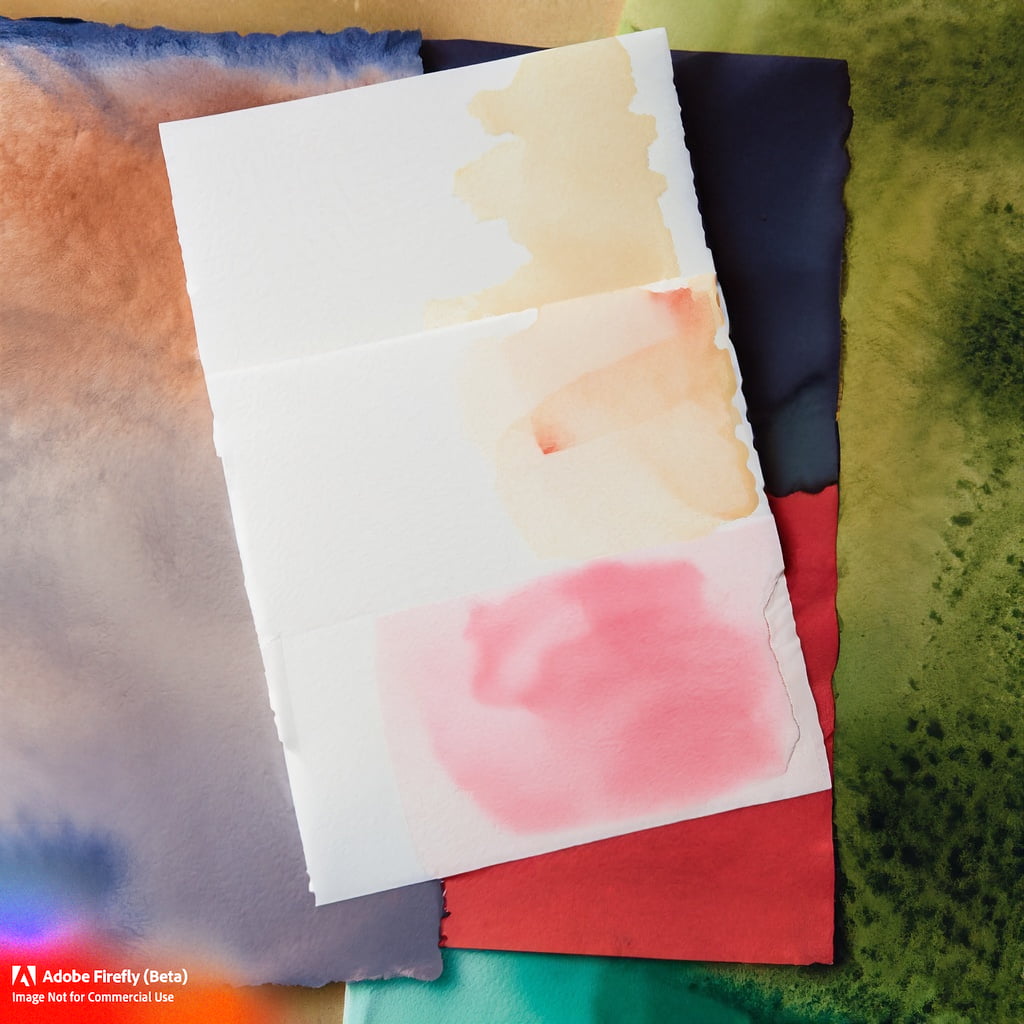Watercolor paper is a type of paper that is specifically designed for use with watercolor paints. It is made from a high-quality cotton fiber that is able to absorb a lot of water without buckling or warping. Watercolor paper is available in a variety of weights and textures, so you can choose the type that is best suited for your needs. Then the article will explain How to Use Watercolor Paper.
Choosing Watercolor Paper
When choosing watercolor paper, there are a few factors to consider:

- Weight: Watercolor paper is typically available in weights ranging from 90 lb. to 300 lb. The weight of the paper refers to its thickness. Heavier paper is more durable and will not buckle as easily as lighter paper. However, heavier paper can also be more difficult to work with.
- Texture: Watercolor paper is also available in a variety of textures, including cold-pressed, hot-pressed, and rough. Cold-pressed paper has a slightly textured surface that is good for creating washes and blending colors. Hot-pressed paper has a smooth surface that is good for creating detailed paintings. Rough paper has a very textured surface that is good for creating abstract paintings.
Some popular brands of watercolor paper include Arches, Fabriano, and Strathmore.
Preparing Watercolor Paper
Before you start painting, you will need to prepare your watercolor paper. If you are using a heavy-weight paper, you may not need to do anything. However, if you are using a lighter-weight paper, you may want to stretch it to prevent it from buckling. To stretch watercolor paper, you will need to:
- Soak the paper in water for a few minutes.
- Lay the paper out on a flat surface and smooth it out with a sponge or your hands.
- Tape the paper in place around the edges.
- Let the paper dry completely.
Transfer Your Drawing

If you have a drawing that you want to transfer to your watercolor paper, there are several methods you can use. You can use graphite paper, a light box, or even a window to trace your drawing onto the paper. You can also use transfer paper or transfer pencils to transfer your drawing.
Painting with Watercolor Paper
Once your watercolor paper is prepared and optional drawing transfer, you can start painting. There are a few things to keep in mind when painting with watercolor paper:

- Use a lot of water. Watercolor paints are very transparent, so you will need to use a lot of water to create washes and blend colors.
- Be patient. Watercolor paint dries quickly, so you will need to work quickly.
- Use a variety of brushes. There are a variety of brushes that are good for watercolor painting. Experiment with different brushes to find what works best for you.
- Have fun! Watercolor painting is a great way to relax and express your creativity.
Flatten Your Paper
After you have finished painting, your watercolor paper may become warped or buckled. To flatten your paper, you can use a heavy book or a flat board to press it down. You can also use an iron on a low heat setting to gently flatten your paper.
Tips for Using Watercolor Paper
Here are a few tips for using watercolor paper:
- Use a damp sponge to blend colors. This will create a smooth, seamless finish.
- Use a dry brush to lift color. This can be used to create highlights or to create interesting effects.
- Use masking fluid to protect areas of the paper from paint. This can be used to create clean lines or to create stencils.
- Experiment with different techniques. There are many different ways to use watercolor paper. Experiment with different techniques to find what you like best.
With a little practice, you will be able to create beautiful watercolor paintings on watercolor paper.
FAQ on How to Use Watercolor Paper
Q: What is watercolor paper?
A: Watercolor paper is a type of paper that is specifically designed for use with watercolor paints. It is made from cotton or cellulose fibers, and it is sized to resist the penetration of water. Watercolor paper comes in a variety of weights and textures, each of which has its own unique properties.
Q: What are the different types of watercolor paper?
A: There are three main types of watercolor paper: hot press, cold press, and rough. Hot press paper has a smooth surface, cold press paper has a slightly textured surface, and rough paper has a pronounced texture.
Q: What weight of watercolor paper should I use?
A: The weight of watercolor paper refers to its thickness. The heavier the paper, the less likely it is to buckle when wet. For general watercolor painting, a paper weight of 140 lb. (300 gsm) is a good choice. If you are planning on doing a lot of wet-on-wet painting, you may want to use a heavier paper, such as 300 lb. (640 gsm).
Q: How should I prepare watercolor paper for painting?
A: There are a few different ways to prepare watercolor paper for painting. One way is to stretch the paper. To do this, soak the paper in water for a few minutes, then stretch it taut over a board. Use weights to hold the paper in place until it dries. Another way to prepare watercolor paper is to prime it. Priming the paper will help to prevent the paint from soaking into the paper too much. To prime the paper, use a gesso or acrylic primer.
Q: What are some tips for painting with watercolors?
A: Here are a few tips for painting with watercolors:
- Start with a light touch. You can always add more paint, but it’s hard to take it away.
- Use a variety of colors. Watercolors are very versatile, so don’t be afraid to experiment with different colors.
- Don’t be afraid to blend. Watercolors are very good at blending, so use this to your advantage.
- Have fun! Watercolor painting is a great way to relax and express your creativity.

